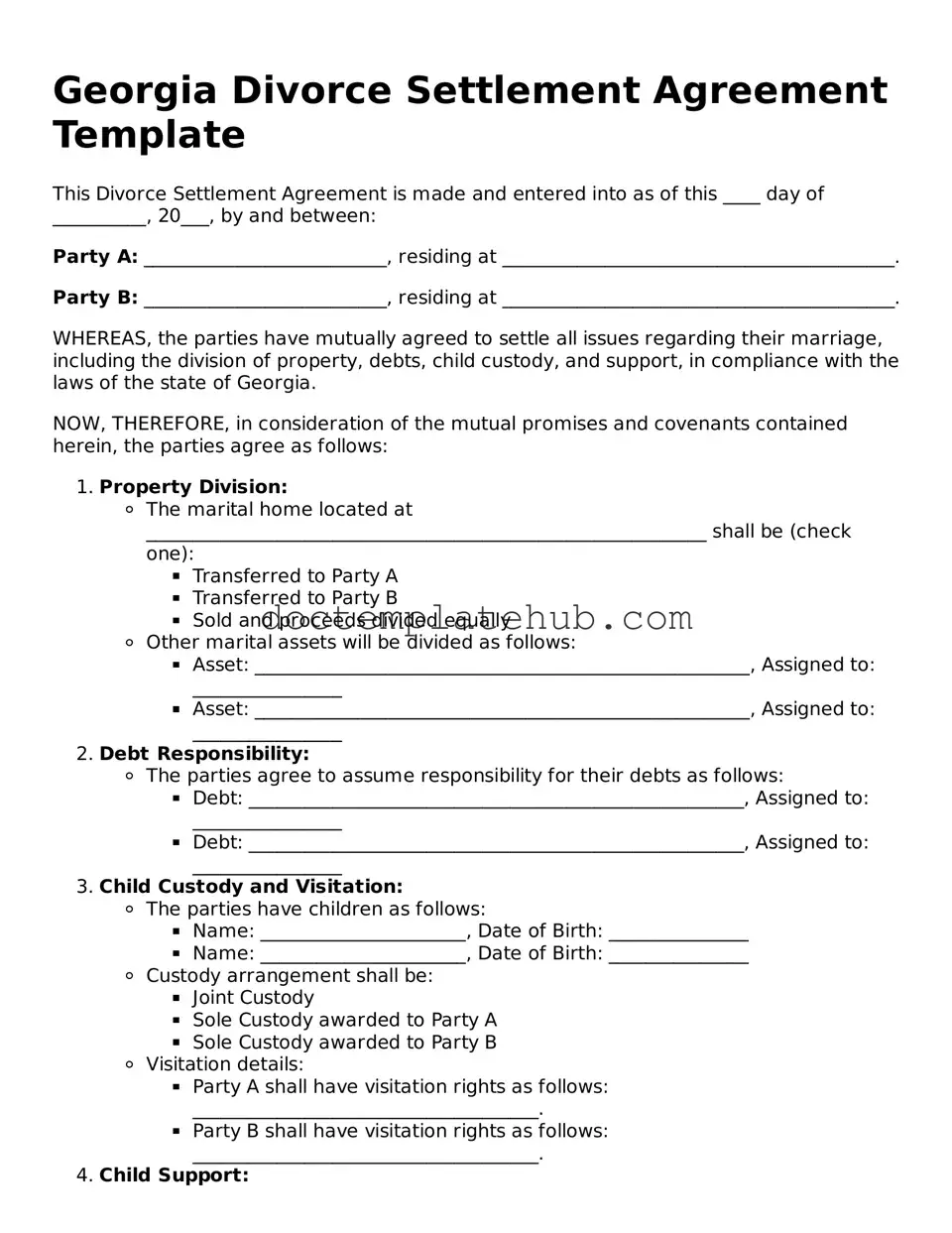The Georgia Child Custody Agreement is a document that outlines the arrangements for the care and upbringing of children following a divorce. Like the Divorce Settlement Agreement, it addresses important issues such as physical custody, legal custody, visitation rights, and child support. Both documents aim to protect the interests of the children involved and ensure that their needs are met in a stable environment. Clear communication and mutual agreement between parents are essential in both cases, helping to reduce conflict and promote cooperation post-divorce.
The Georgia Child Support Worksheet is another important document that complements the Divorce Settlement Agreement. This worksheet calculates the amount of financial support one parent must provide to the other for the upbringing of their children. It considers various factors, including income, expenses, and the number of children involved. While the Divorce Settlement Agreement may outline the general terms of child support, the Child Support Worksheet provides a detailed calculation that ensures fairness and compliance with state guidelines.
In the context of legal agreements related to divorce and child custody, it's important to ensure that sensitive information is protected. Utilizing a Non-disclosure Agreement can be beneficial for parties involved in these discussions, as it provides a framework to maintain confidentiality. For those looking for assistance in drafting such an agreement, resources like smarttemplates.net can offer valuable templates and guidance.
The Marital Settlement Agreement is similar to the Divorce Settlement Agreement in that it resolves all issues related to the division of property, debts, and other marital concerns. This document is often used when couples have reached an amicable decision about how to separate their assets and liabilities. Both agreements serve to finalize the terms of the divorce, but the Marital Settlement Agreement may be used in cases where the divorce is uncontested, making it a streamlined option for couples who agree on the terms.
The Separation Agreement is another document that bears resemblance to the Divorce Settlement Agreement. Typically created when a couple decides to live apart but has not yet filed for divorce, the Separation Agreement outlines the terms of their separation, including financial responsibilities, child custody, and support arrangements. Both documents aim to provide clarity and structure during a transitional period, helping couples navigate their new circumstances while still legally married.
The Parenting Plan is a document that outlines how parents will raise their children after a divorce or separation. Similar to the Divorce Settlement Agreement, it addresses custody arrangements, visitation schedules, and decision-making responsibilities. Both documents emphasize the importance of the children's welfare and aim to establish a cooperative co-parenting relationship. A well-crafted Parenting Plan can minimize disputes and ensure that both parents remain actively involved in their children's lives.
